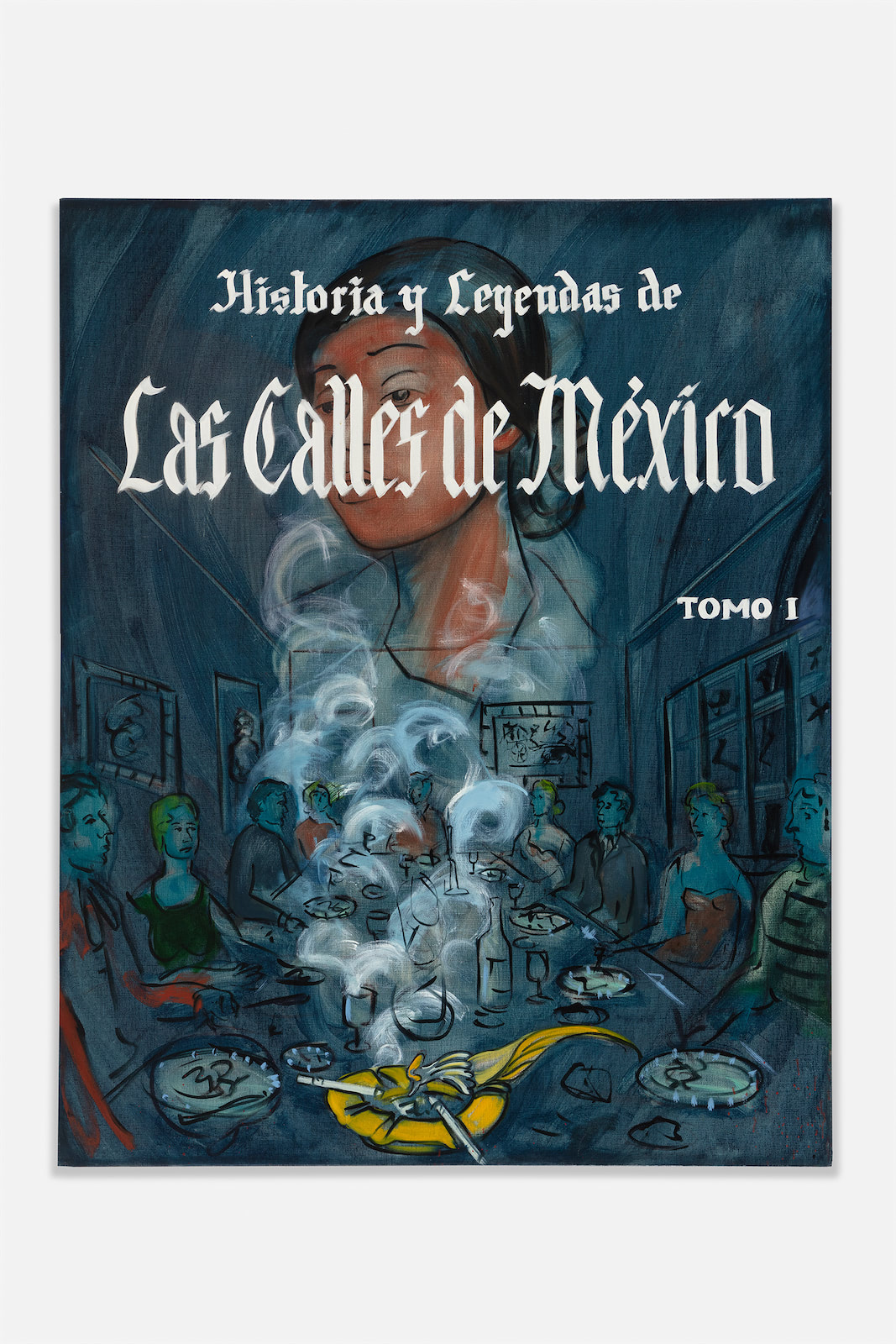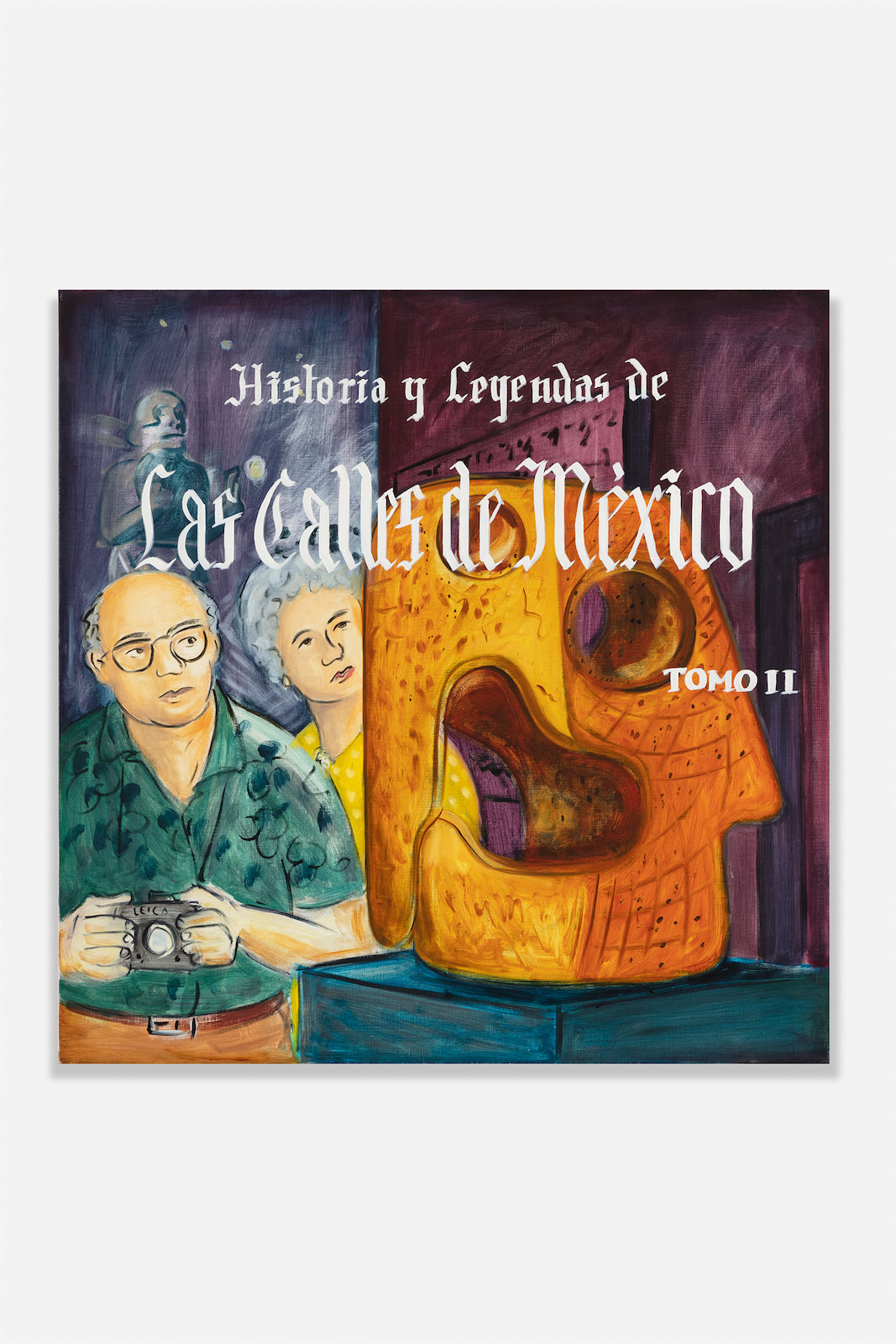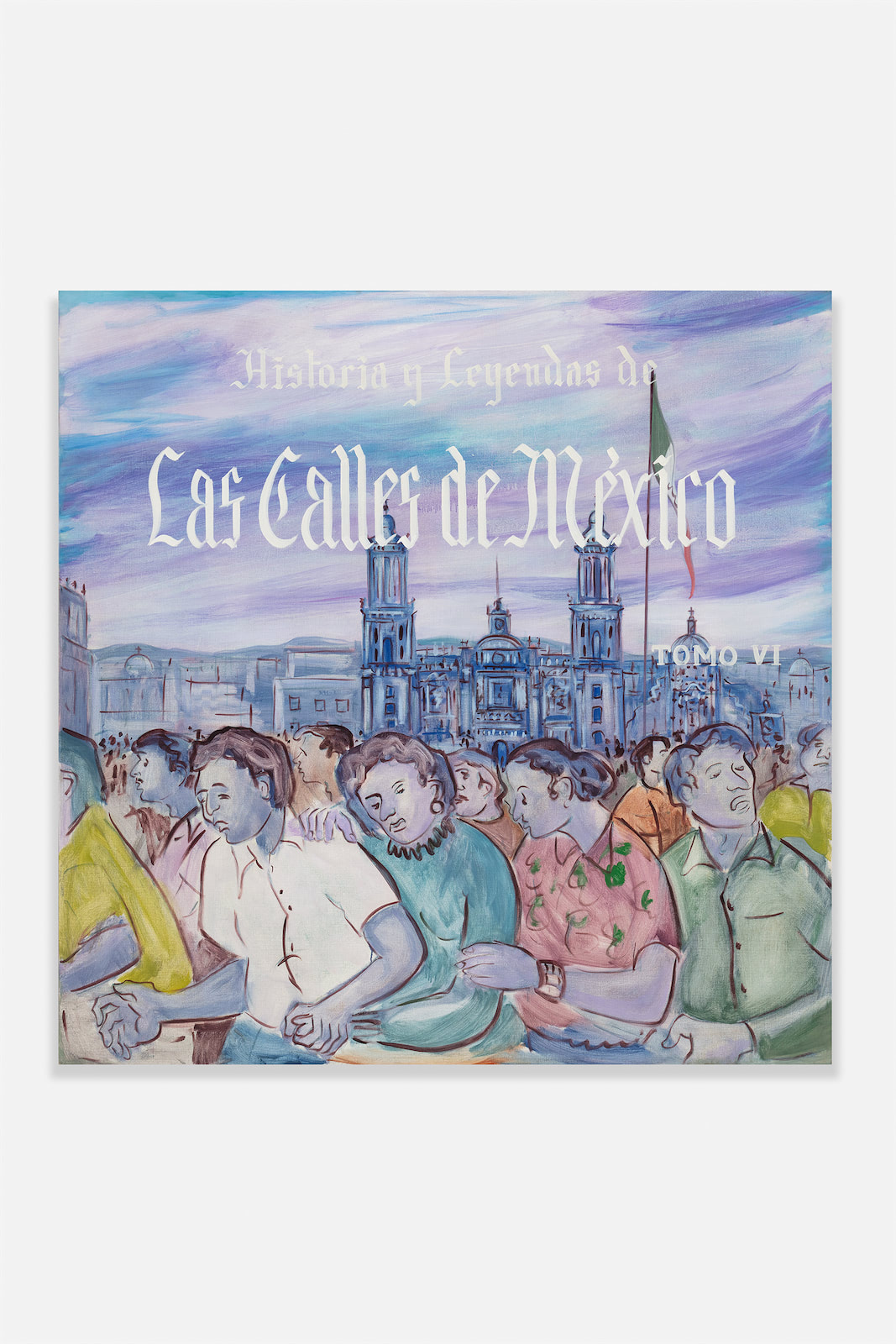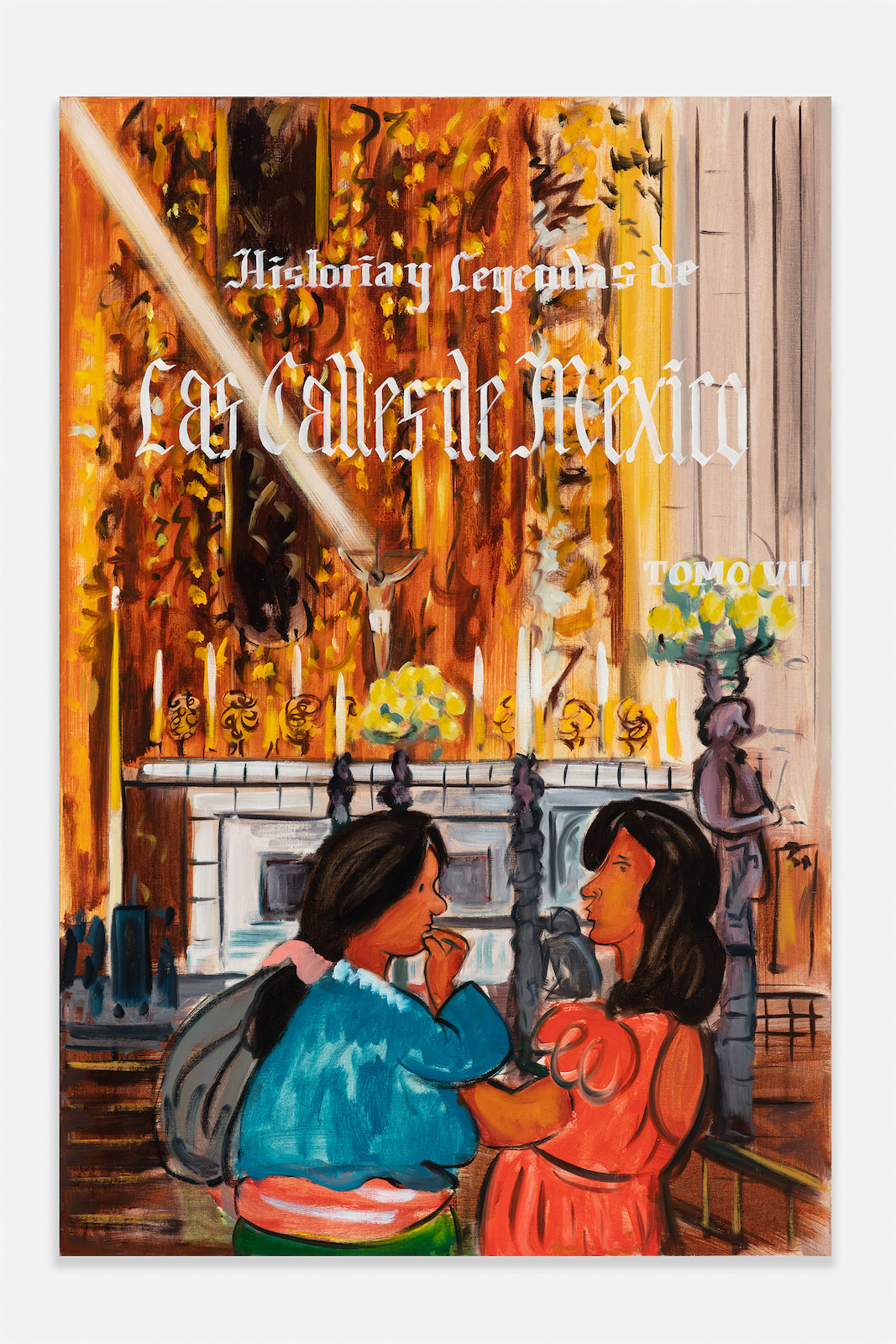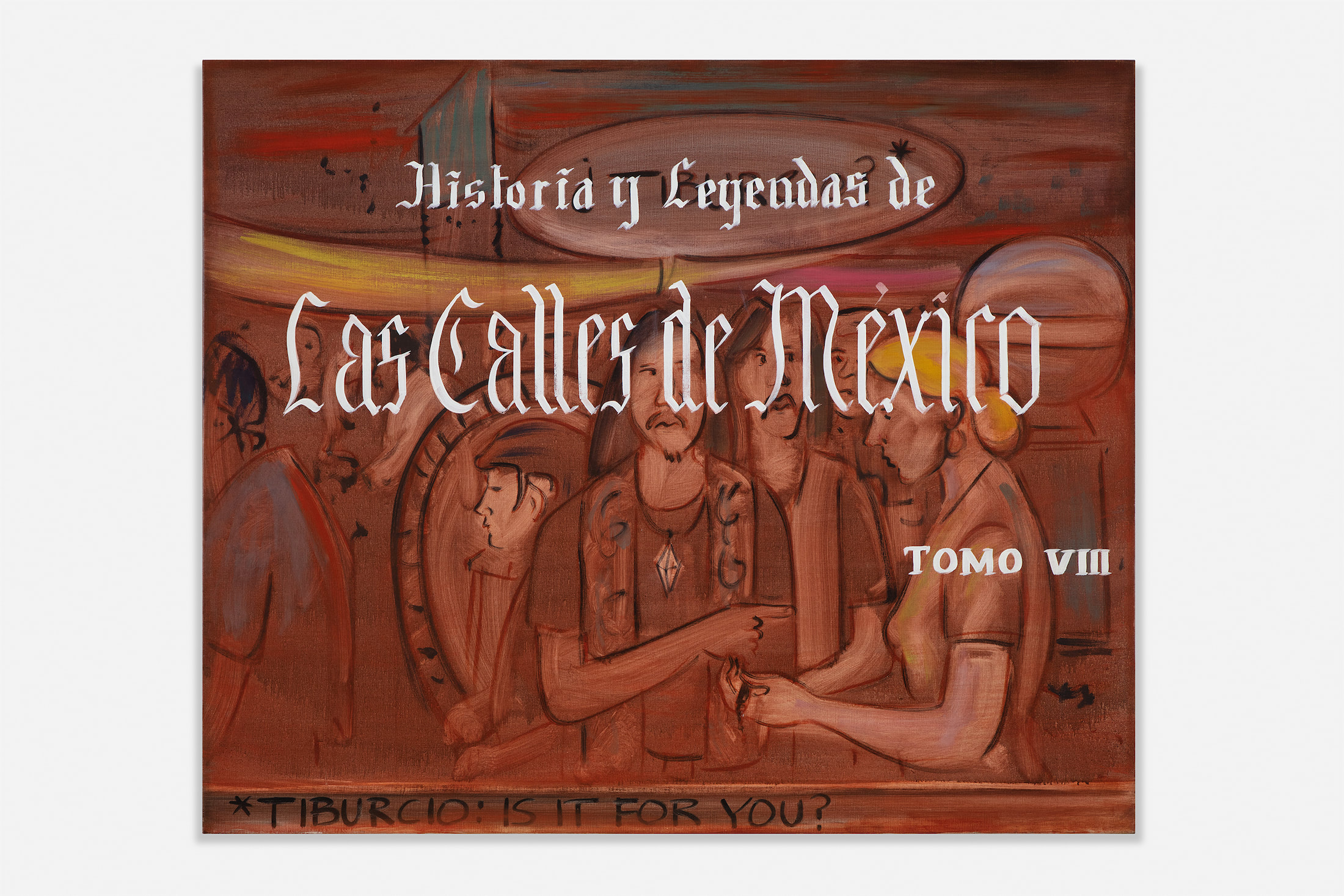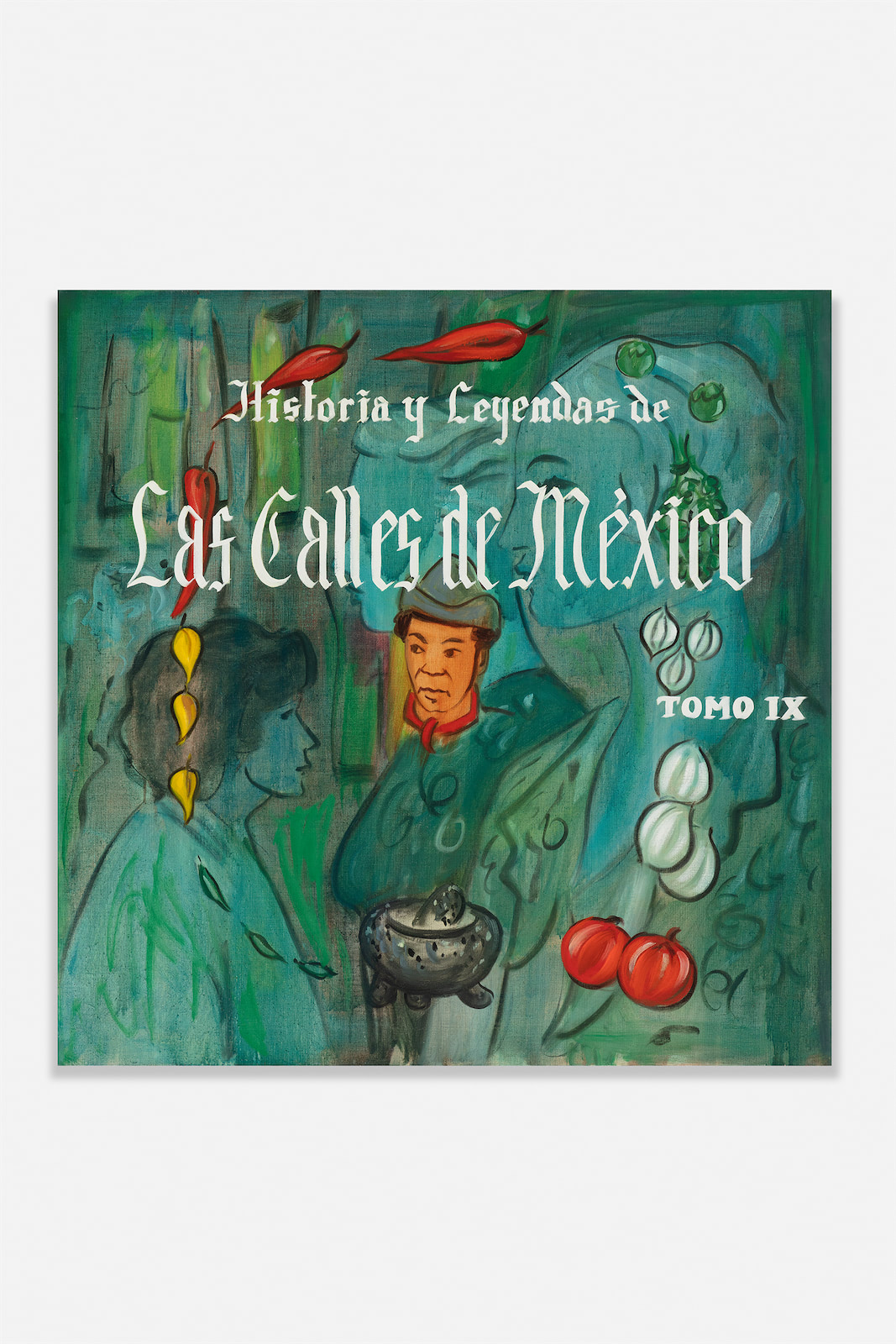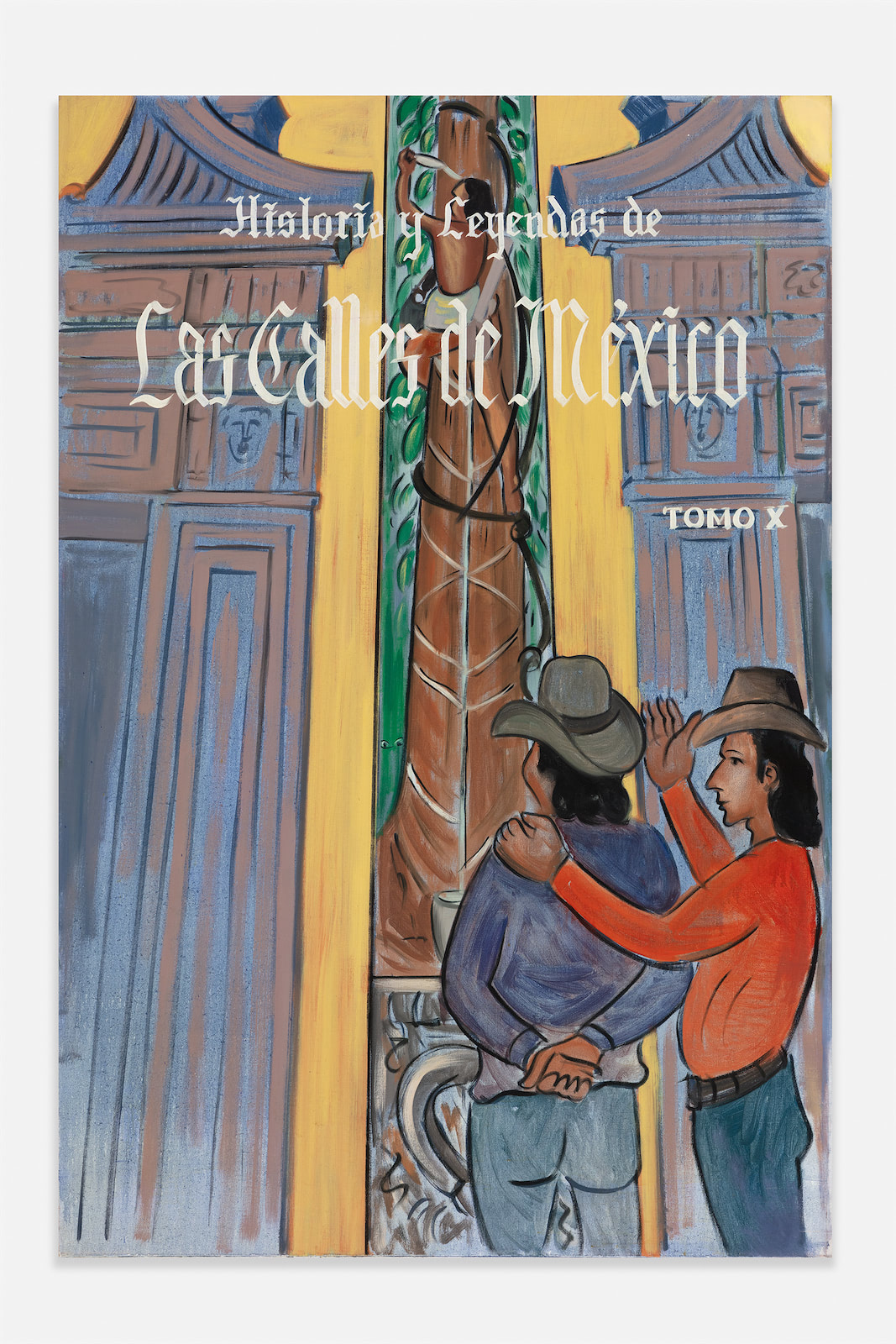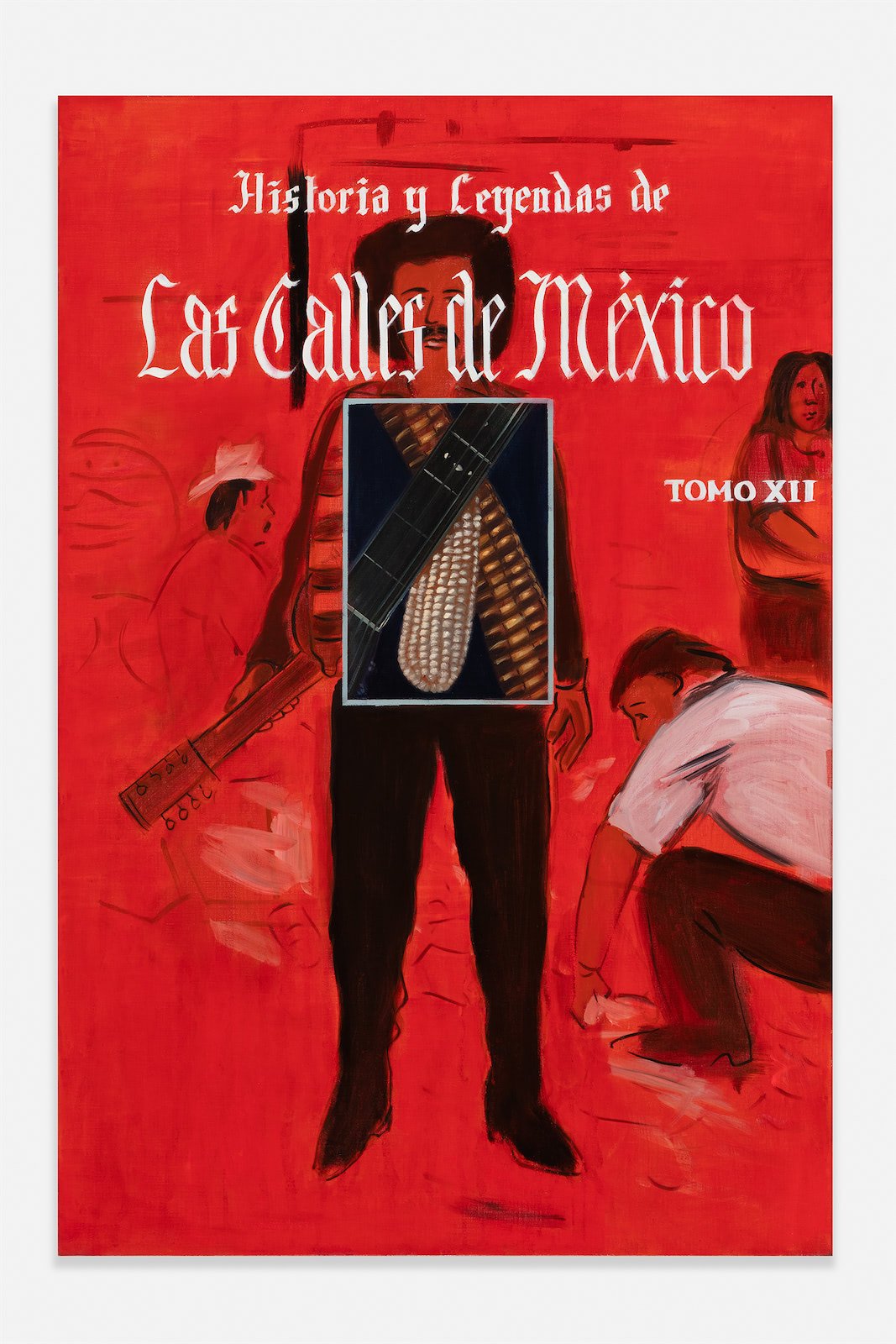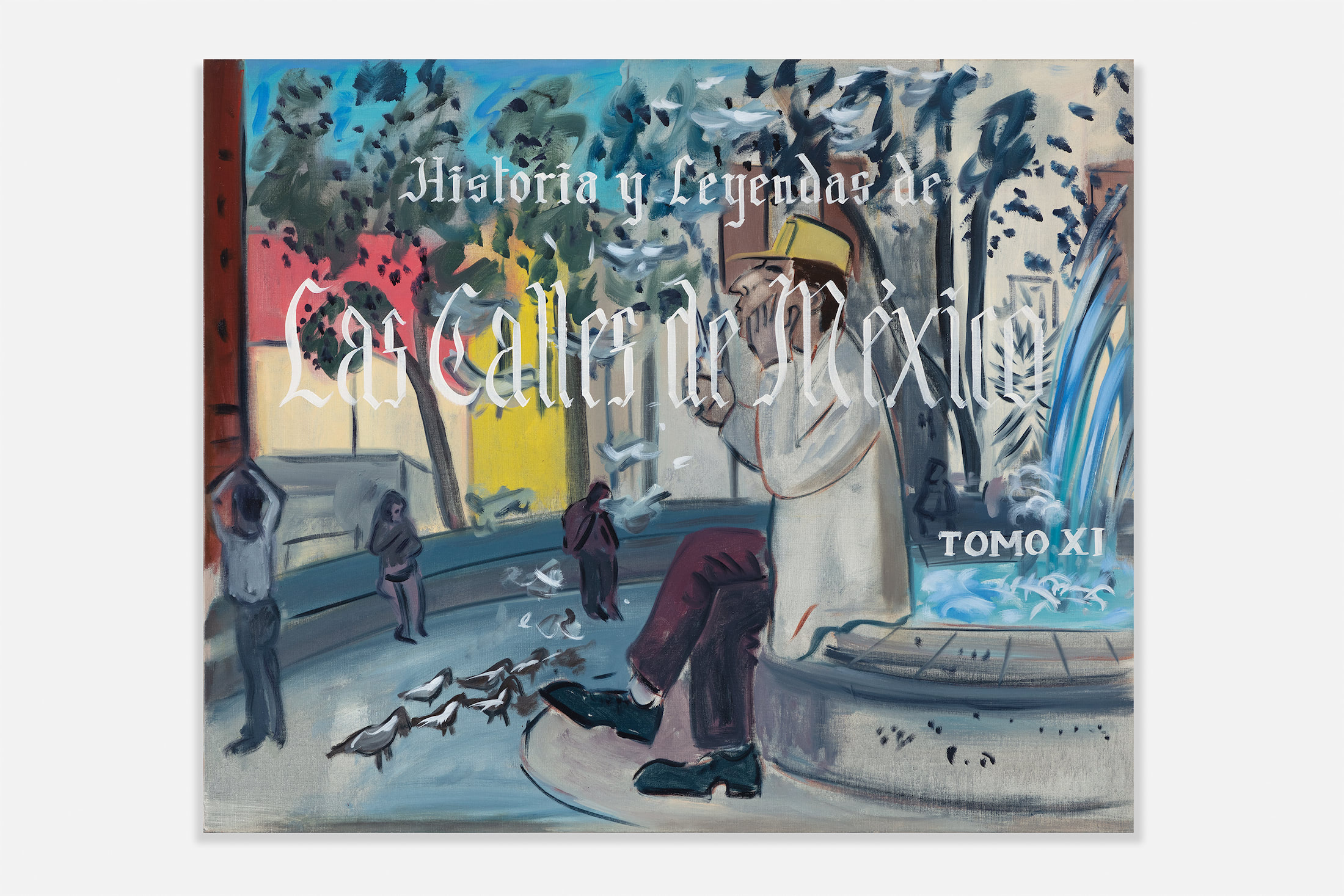Raul Guerrero
Historia y Leyendas de las Calles de MéxicoFebruary 8 - March 12, 2022
Is a city its own bibliography more so than its architecture? Every city is a palimpsest. Erected above its buildings, squares, transportation systems, ruins, monuments, which shape a city, another city rises made out of poems, rumors, paintings, chronicles, photographs, stories, films, engravings and conversations. Or rather, one and the other, not being one and the other but imperceptibly, they conform one same city, multiple, diverse, unstable, Babelic and relentless: spatial and imaginary at the same time and in many moments at once. Such is what Historia y leyendas de las calles de México, the first exhibition in Mexico by Mexican-American artist Raul Guerrero (b. 1945) makes us notice.
Made in 1994 as the result of one of the artist's visit to what was still known as DF, the twelve canvases that make up the series (of which eleven are shown in the gallery) could be understood more than as paintings as catalogues or fascicles of a discovery: volumes, as they insist on proclaiming themselves. Book covers of impossible publications, as non-existent as they are true, of literarily hermetic works; covers announcing a text the intended reader cannot seem to open. Twelve volumes of an illegible work, like Mexico City. Twelve covers for an enigma or twelve enigmas for a city.
The bibliographic starting point of this project (and in a certain way iconographic as well, together with some film scenes from the Golden Age of Mexican cinema, and Mexican caricature) is made up of those publications by nineteenth-century authors (Luis González Obregón, Juan de Dios Peza, Artemio del Valle Arizpe) who collected the legendary stories of the city trying to give them a historical framework, and whose popular editions, to which the title of the exhibition alludes to and the typography of each painting reproduces, were very successful in the 20th century through its sale on newsstands. This is revealed by the cover image of Tomo III, where, framed by the pages of the newly acquired book, you can see the sale of magazines as a scenic background for some local beat poets who are probably more influenced by Jack Kerouac’s Mexico City Blues, Allen Ginsberg's Howl, or the dark testimonies of William Burroughs's time in Colonia Roma, than by the colonial legends displayed in the pages that surround them as a textual architecture they cannot read.
On the other hand, the topographical starting point of this trip, which is reported in Tomo I, takes place at a dinner in Polanco, where, from the smoke that emanates from a full ashtray, rises the ghostly image of Tina Modotti, double agent, artist and spy, foreign Malinche whose alien gaze invented one of the possible gazes that became even more national than the pretended national ones. What or who does he see, or through the eyes of whom does he see, he who claims to see Mexico City? What would our image of Tenochtitlan be without the textual look of Hernán Cortés in his Cartas de Relación and other chroniclers of the Indies? What came first, the native or the visitor? Tina Modotti becomes, in this Divine Mexican Comedy in twelve volumes, a kind of Virgil who will guide Raúl Guerrero through the joyful hell of Anahuac. From Polanco to the infernal circles of the historic center, crossing Reforma and passing through the Museum of Anthropology and the Zona Rosa, to end in this fascinating Tomo XII, where the image of a traveling musician is superimposed with the reproduction of an iconic photograph by Modotti. Again: what do we see when we see? Is that what we saw? Where? In what book? Do we see or read?
Twelve postcards that the sphinx Raúl Guerrero turns into enigmas: an anti-travel guide: twelve covers that are twelve doors to get lost in the streets of Mexico.
Raul Guerrero (b. 1945, Brawley, California) has presented solo exhibitions at David Kordansky Gallery, Los Angeles (2021); Potts, Los Angeles (2018); Ortuzar Projects, New York (2018); Air de Paris (project space), Paris, France (2014); Athenaeum Music and Arts Library, San Diego, California (2001, 2007, and 2013); CUE Art Foundation, New York (2010); Long Beach Museum of Art, California (1977); and San Francisco Art Institute, California (1977). In 1989, the Museum of Contemporary Art San Diego presented a retrospective exhibition of his work. Guerrero has been the recipient of an NEA Photography Fellowship (1979) and the San Diego Art Prize (2006). He lives and works in San Diego, California.
~ ~
Raul Guerrero
Historia y Leyendas de las Calles de México8 de Febrero - 12 de Marzo, 2022
¿Más que su arquitectura, una ciudad es su bibliografía? Toda ciudad es un palimpsesto. Sobre los edificios, las plazas, los sistemas de transporte, las ruinas, los monumentos, que configuran una ciudad, se erige otra ciudad hecha de poemas, rumores, pinturas, relatos, fotografías, crónicas, películas, grabados, conversaciones, narraciones. O, más bien, una y otra, no son una y otra sino que, indiscernibles, conforman una misma ciudad múltiple, diversa, inestable, babélica, inexorable: espacial e imaginaria a un mismo tiempo, que es muchos tiempos a la vez. Tal es lo que vuelve perceptible Historia y leyendas de las calles de México, la primera exposición en el país del artista mexicano-estadounidense Raúl Guerrero (1945) que ahora Gaga se complace en presentar.
Realizados en 1994, a raíz de la primera visita del artista al aún entonces Distrito Federal, los doce lienzos que conforman la serie (de los cuales aquí se presentan once) podrían entenderse más que como pinturas, como libros o fascículos de un descubrimiento: tomos, según insisten ellos mismos en proclamarse. Portadas de fb imposibles, de libros tan inexistentes como ciertos, de ejemplares literalmente herméticos; tapas que anuncian un texto que el pretendido lector no alcanza a abrir. Doce tomos de una obra ilegible, como la Ciudad de México. Doce portadas para un enigma. O doce enigmas para una ciudad.
El punto de partida bibliográfico (y en cierto modo iconográfico también, junto con algunas escenas cinematográficas de la Época de Oro del cine nacional, y la caricatura mexicana) de este proyecto lo componen aquellas publicaciones de autores decimonónicos (Luis González Obregón, Juan de Dios Peza, Artemio del Valle Arizpe) que recogieron las narraciones legendarias de la ciudad intentando otorgarles un marco histórico, y cuyas ediciones populares, a las que el título de la exposición alude y la tipografía de cada cuadro reproduce, tuvieron gran éxito en el siglo XX a través de su venta en los puestos de periódicos. De ello da cuenta la imagen de portada del Tomo III, donde, enmarcado por las páginas del libro recién adquirido, puede verse el expendio de revistas como fondo escenográfico de unos poetas beats locales que, probablemente, se encuentren más influidos por el Mexico City Blues de Jack Kerouac, el Aullido Allen Ginsberg, o las oscuros testimonios de la temporada de William Bourroughs en la Colonia Roma, que por las leyendas coloniales desplegadas en las páginas que los rodean como una arquitectura textual que no alcanzan a leer.
Por otra parte, el punto de partida topográfico de este viaje, del que da cuenta el Tomo I, tiene lugar en una cena en Polanco, donde, desde el humo que se eleva de un cenicero repleto, se eleva la imagen fantasmagórica de Tina Modotti, agente doble, artista y espía, Malinche extranjera cuya mirada foránea supo inventar una de las posibles miradas que derivaron más nacionales que las pretendidamente nacionales. ¿Qué o a quién ve, o a través de lo ojos de quién ve, quien dice ver la Ciudad de México? ¿Cuál sería nuestra imagen de Tenochtitlan sin la mirada textual de Hernán Cortés en sus Cartas de Relación y los otros cronistas de Indias? ¿Qué fue primero, el nativo o el visitante? Tina Modotti, deviene, en esta Divina Comedia Mexicana en doce tomos, una suerte de Virgilio que guiará a Raúl Guerrero por el gozoso infierno del Anáhuac. Desde Polanco hasta los infernales círculos del centro histórico, atravesando Reforma y pasando por el Museo de Antropología y la Zona Rosa, para rematar en ese fascinante tomo XII, donde a la imagen de un músico ambulante se superpone la reproducción de una icónica fotografía de Modotti. Otra vez: ¿qué es lo que vemos cuando vemos? ¿Lo que vimos? ¿Dónde? ¿En qué libro? ¿Vemos o leemos?
Doce tarjetas postales de turista que la esfinge Raúl Guerrero trastoca en enigmas: una anti-guía de viajeros: doce portadas que son doce puertas para perderse en las calles México.
Raúl Guerrero (n. 1945, Brawley, California) ha presentado exposiciones individuales en David Kordansky Gallery, Los Ángeles (2021); Potts, Los Ángeles (2018); Ortuzar Projects, Nueva York (2018); Air de Paris (espacio del proyecto), París, Francia (2014); Biblioteca de Música y Artes Athenaeum, San Diego, California (2001, 2007 y 2013); Fundación de Arte CUE, Nueva York (2010); Museo de Arte de Long Beach, California (1977); y el Instituto de Arte de San Francisco, California (1977). En 1989, el Museo de Arte Contemporáneo de San Diego presentó una exposición retrospectiva de su obra. Guerrero ha recibido una beca de fotografía NEA (1979) y el Premio de Arte de San Diego (2006). Vive y trabaja en San Diego, California.







